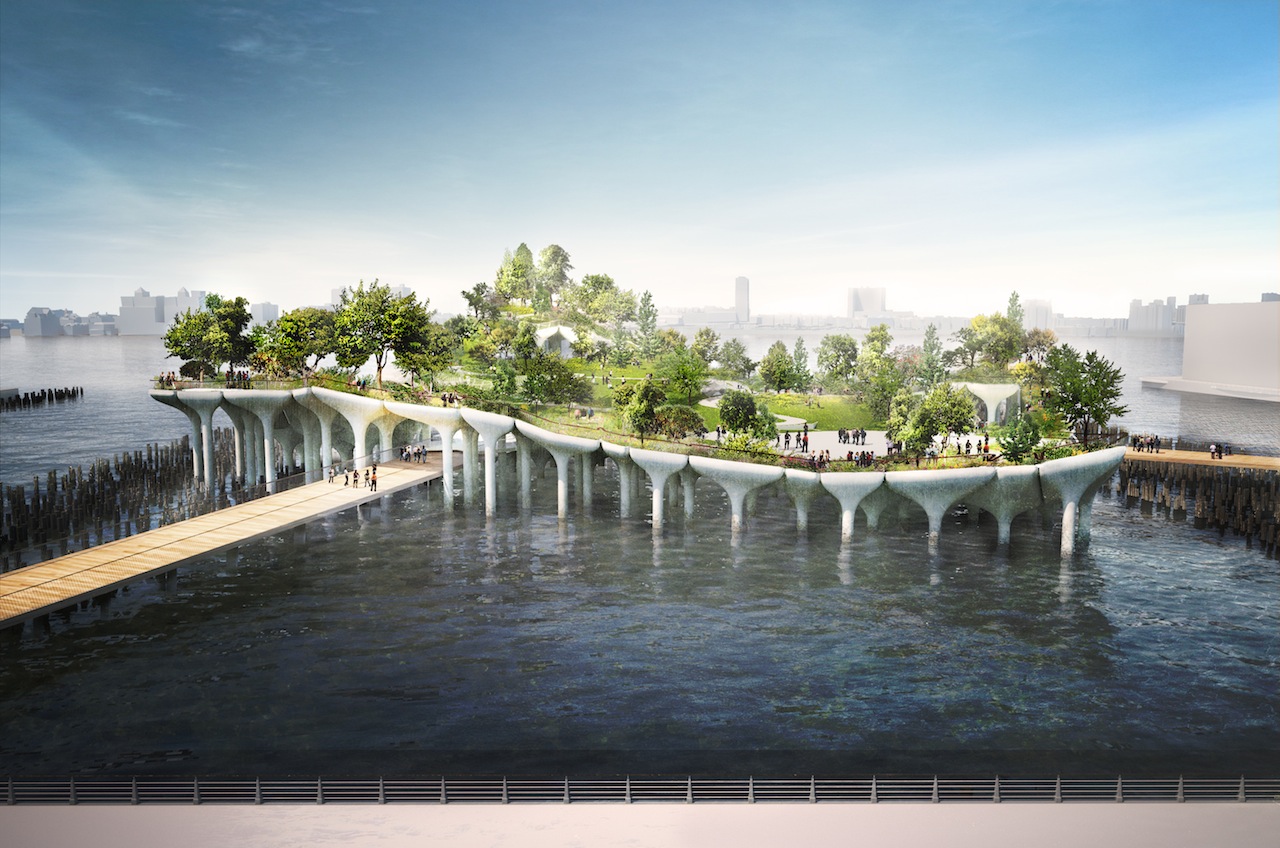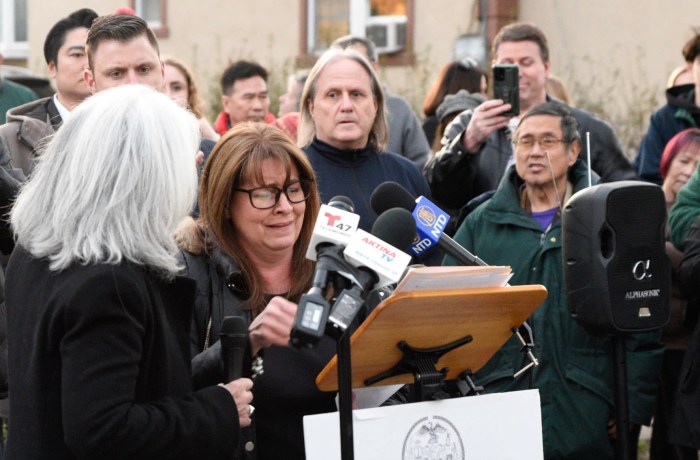
BY ALBERT AMATEAU | The high hopes for an innovative Pier55 took a step closer to reality this month when the state Department of Environmental Conservation posted notice that the project would not have a significant effect on the environment.
The Dec. 7 legal notice carried in the New York Post also said the $130 million new pier proposed for the Hudson River Park — with most of its funding coming as a gift from Barry Diller and Diane von Furstenberg — complies with the State Historic Preservation Act.
The cost of the project includes $17 million from the city for infrastructure — basically, to put in 535 piles to support the new 2.76-acre pier, plus improvements to the park esplanade related to the project.
The pier would essentially be its own island off of W. 13th St., accessible from shore by two footbridges. It would be built on a brand-new footprint in the river, north of the former Pier 54.
But before construction can begin, the U.S. Army Corps of Engineers must review and approve the project. The corps told The Villager in a Dec. 15 e-mail that the Trust filed the application for approval this past April, “but at this time the application is still under review.”
Another remaining issue is a pending State Supreme Court lawsuit filed this past June by the City Club of New York seeking, among other things, to stop the Trust from proceeding until the park authority conducts a full environmental impact statement, or E.I.S., of the entire 4.5-mile-long riverfront park as it relates to the new pier.
The Dec. 7 legal notice of “no significant impact” was based on an environmental assessment form, or E.A.F., a preliminary document filed with the state a year ago. A full E.I.S. would involve a more detailed review that could take another year to complete.
Assemblymember Deborah Glick is also calling for a full E.I.S. for Pier55. In addition, she wants the Army Corps of Engineers to host a public meeting on the project. But the corps has said it is not authorized to do so. The corps could, however, order an E.I.S. as a condition of its approval.
David Paget, the Trust attorney, said last week that the City Club lawsuit was not based on facts.
“You need more than rhetoric,” he said, regarding the legal action.
The assessment form was supported by a 300-page technical document that justified the “no impact” finding, Paget said. He also dismissed the lawsuit’s complaint that the Trust accepted the Diller / von Furstenberg gift secretly without public bidding. Paget said bidding is not required for the Trust to accept a gift.
Paget also disputed the lawsuit’s contention that the uses proposed for Pier55 violated the law. The new pier includes an amphitheater, a venue for public performance based on an admission fee. Public recreation and entertainment are permitted park uses and fee-based events are common in the city’s parks, Paget said, citing Randall’s Island and the Delacorte Theater in Central Park.
Community Board 2 has held two public hearings on the Pier55 project.
“We had certain concerns but we were happy with the Trust’s response about establishing a public advisory group for the project,” said Tobi Bergman, C.B. 2 chairperson.
“Board members were impressed that there would be a real sharing with the public of the performance areas in the park when there were no performances,” Bergman said. “A gift like this is not coming back if it goes away. We really need public recreation and we need culture. This is a great opportunity,” he added.
Adrian Benepe, senior vice president of the nonprofit Trust for Public Land and former commissioner of the city’s Parks and Recreation Department, told The Villager last week that he was confident that Pier55 would prevail in court.
“There is a long tradition of ticketed events in public parks,” Benepe said, adding that the project “is a great way to combine public recreation and an arts venue.”

















